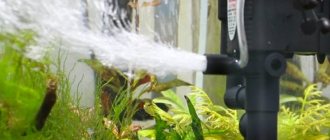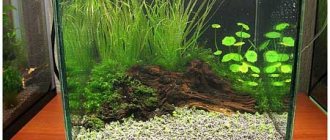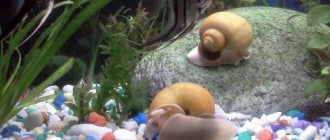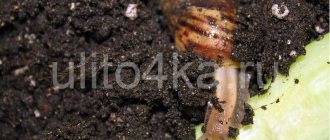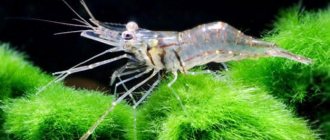Soil cleaning methods
Two main methods are used to clean soil:
- using a dirt suction device (or siphon);
- removing soil from the aquarium and placing it in a specially selected container, followed by rinsing under running water.
As a rule, the first cleaning option is used because it is less labor-intensive and does not take much time. You can extend the procedure over several days by dividing the bottom area into sections and sequentially treating one or two per day.
Cleaning with soil extraction requires greater efficiency, since the fish are temporarily resettled and are in unusual conditions. This can greatly harm the inhabitants of the aquarium, therefore, they try to complete the cleaning procedure as soon as possible.
Important Details
Allows you to regulate the intensity of the water flow passing through the device. It is not very convenient to carry out a siphon without such a tap; you always have to pinch the drain with your finger or change its height.
Mesh in the fence.
Finding and installing such a mesh on a homemade device is not so easy, so many aquarists prefer a purchased option. The mesh in the intake part of the hose prevents pebbles in the ground from being drawn into the apparatus and protects small-caliber inhabitants of the tank from the same fate. They would hardly like a high-speed descent through the device’s hose followed by a swim in dirty water.
Siphon drain filter.
The water pumped out during soil cleaning can be reused, only, of course, it must first be separated from the removed dirt. If you use the simplest siphon design, there is only one way to do this: wait until the dirt settles at the bottom of the drain container. But if you bought a device whose drain is equipped with a filter (usually a small cloth bag), then you will immediately receive clean water suitable for reuse. The main thing to remember is: if the fish’s habitat has not been cleaned for a very long time, the pumped out water cannot be reused, even if a filter is installed on the drain of the device. Nitrites and ammonium salts contained in large quantities in the drained water will poison the tank environment and cause the death of all living organisms in it.
Loading …
How does a siphon for an aquarium work?
A mud pump, soil cleaner or siphon for an aquarium is a device consisting of several elements:
- transparent tube or funnel;
- flexible hose (rubber or PVC);
- pump with electrical or mechanical drive.
The general principle of operation is the same in any case - a transparent funnel is placed on the ground, water along with contaminants enters it and through a flexible hose enters a special trap (this is a small reservoir located immediately after the pump).
The water either enters a separate container, from which, after filtration, it returns to the aquarium, or it immediately goes back, passed through a mesh filter.
Mechanically driven siphons are cheaper, but the cleaning process with them is more labor-intensive; you have to manually operate the pump and filter the removed water before returning it to the aquarium. Siphons with an electric motor are more convenient to use, but somewhat more expensive.
1 - Mechanical siphon 2- Siphon with electric motor
As a rule, mechanical devices are preferred by owners of relatively small aquariums, while electric ones are purchased for large containers that require lengthy and thorough processing. At the same time, there is a limitation on the height of the walls - if they are higher than 50 cm, water can be poured into the battery compartment of the siphon.
In addition, you need to pay attention to the height of the glass (funnel). It is recommended to choose models with a suction part height of at least 20 cm. Then large soil particles will settle to the bottom without entering the hose and container with water or filtrate. This is an important point, since otherwise the amount of soil will decrease with each cleaning and require regular replenishment.
You should purchase siphons with a transparent tube (funnel) to control the cleaning process and stop it in time.
Battery Powered Aquarium Gravel
264 Reviews 563 orders(s)
Specifications: Condition: 100% Brand New Material: Plastic Color: As shown in the picture Power Source: 2 x 1.5 VC batteries (not included) Drain Pipe Length: Approx. 67cm/26.38in Intake Pipe Length (3pcs): Approx. 18cm/7.09in, 20cm/7.87in, 40cm/15.75in Total length: min. 58cm/22.83in, 72cm/28.35in. 95cm/37.40in (adjustable) Normal water level: 30cm. Water level: 72 cm. : 520L/h Weight: approx. 373 g
Package Included: 1 x Gravel Cleaner Main Body (Battery Not Included) 3 x Water Inlet Pipes 1 x Drainage Pipe 1 x Strainer Bag 1 x Blackhead and Pimple Remover Tool 1 x Cleaning Brush;
Note: 1. Please allow 0-2cm differs due to manual measurement.
Thanks for understanding. 2. Monitors are not calibrated same, item color displayed in photos may be slightly different from the actual item. Price: 650.05 rub.
BUY ON ALIEXPRESS
How is cleaning done?
You should use the siphon a few weeks after starting the aquarium, not earlier. Firstly, there will be no point in the procedure, since organic matter and food residues have not yet had time to accumulate. Secondly, the inhabitants of the aquarium are just getting accustomed to their new place, therefore, it is not advisable to disturb them.
The cleaning process, in addition to removing excess organic matter settled on the ground, involves removing part of the water. In some cases, it is filtered and returned back, in others it is simpler and topped up with clean water to the desired level.
Cleaning procedure:
- Prepare a siphon and a container for water (a regular bucket will do).
- Fill the siphon tube with water and immerse it in the aquarium. The free end must be lowered below the bottom level, otherwise the water will not flow by gravity (if an electric siphon model is used, this condition is not necessary).
- It is recommended to conditionally divide the bottom area into squares in advance so that cleaning is as thorough as possible. This especially applies to large aquariums.
- Using a tube, lightly stir up the soil, raising the turbidity. It is recommended to immerse it to the very bottom (to the glass) in order to siphon the entire layer of backfill and remove organic matter with maximum efficiency.
- Heavier soil particles will settle to the bottom, and organic matter and fine suspension will be picked up by the water flow and discharged into the prepared container.
- The process is controlled by monitoring the state of the flow. As soon as the water in the tube has become clear, the procedure is transferred to the next section of the bottom (or stopped altogether).
The more powerful the siphon, the larger the tube diameter required. If the water leaves too intensively, the soil itself may be sucked in, which is undesirable. It is necessary to organize the process so that only organic matter and suspended matter are removed, and the backfill layer remains at the bottom.
What is it for?
Various models of aquarium siphons can rid the container of unwanted dirt at the bottom and provide the fish with a safe habitat. Uneaten food remains, silt and fish excrement fall to the bottom, polluting the water, causing poisoning and decreased immunity in the fish; in some breeds, the color fades and the level of activity decreases. For especially fastidious aquarium inhabitants, waste in the ground is deadly. The bottom soil should be cleaned as it gets dirty; the aquarist must carefully monitor the habitat of the pets.
Pros and cons of using a siphon for an aquarium
The positive aspects of cleaning soil using a siphon include:
- the ability to remove decaying organic particles;
- the danger of acidification of the substrate, which does not receive oxygen, is eliminated;
- the bad odor is eliminated, no harmful gases are released from the soil.
Flaws:
- the number of bacteria living in the upper layers of the substrate decreases, which leads to a decrease in biofiltration ability;
- Nutrients are removed from the soil, which worsens the conditions for keeping plants;
- there is a risk of damage to the roots of aquatic plants.
When choosing a method for cleaning an aquarium, you need to weigh all the pros and cons so as not to disturb the ecosystem and not worsen the living conditions of fish and other organisms.
Popular manufacturers
There is now a large selection of aquarium soil cleaners on the market. The most popular manufacturers are:
- EHEIM. The company produces the best aquarium siphons, which not only drain liquid and debris into a separate container, but also filter it efficiently. Then the water returns to the reservoir. The nozzles have a special design that prevents injury to aquatic life. The devices operate on batteries or from the mains.
- Hagen. Engaged in the production of convenient and modern devices for maintaining an aquarium. Automated models are equipped with long hoses. Mechanical devices with a pump are also produced, which are much cheaper than electric ones.
- Tetra. The company produces siphons for every taste. Huge selection of budget models. The products are distinguished by high build quality and durable materials.
- Aquael. The Polish company provided serious competition to leading German manufacturers. The devices are of excellent quality and affordable. Provide user convenience and safety for aquatic life.
The listed brands are among the leaders in product sales. Each manufacturer's line of siphons includes a huge variety of electrical or mechanical models.
Which soil is most in need of cleaning?
Mostly soil without plants needs cleaning. It is recommended to siphon it monthly (in small aquariums you can repeat the procedure twice a month, sometimes 3 times a week). This will help maintain the concentration of nitrates and phosphates at a safe level.
Herbalists siphon much less often - once a year, or even less often. The fact is that plants form an ecosystem with a closed consumption cycle. The settling particles of organic matter and decomposition products become a nutrient medium for plants and do not require frequent cleaning. For cleaning, it is recommended to use a special metal tube with a flattened working end so as not to damage the roots.
Arend van den Nieuwenhuizen
Aquascaper
If nutrient soils are used as soil, siphon cleaning cannot be used. During the cleaning process, nutrients will be removed from the granules and sludge containing useful substances will be removed. Soils are not washed at all, even before adding them to the aquarium. This allows you to preserve the working qualities of the soil, the service life of which is already quite short (it is generally accepted that the service life of soils does not exceed 1.5-2 years).
— Arend van den Nieuwenhuizen Aquascaper
If the amount of organic matter in the soil begins to worry, and siphoning is not possible, it is recommended to add shrimp or snails that can destroy excess waste and silt.
When not to siphon
- Rarely do they clean aquariums that are completely planted and contain small amounts of small fish and shrimp. The absence of acidification is due to the fact that plant roots penetrate all layers of soil and release oxygen. The released oxygen eliminates the formation of anaerobic zones. The exception is small and weak roots in combination with fine soil laid out in a thick layer. To control the situation, you should periodically check the soil, loosening it with a thin stick.
- It is forbidden to siphon a newly launched aquarium; it will be possible to siphon it no earlier than after 14 days. It is necessary to first grow a colony of nitrifying bacteria in the reservoir; only water changes are allowed.
- It is prohibited to use a siphon to clean herbal aquariums that are densely planted. The siphon will upset the balance, depriving the plant roots of the necessary nutrition. Cleaning helps to raise sludge, which releases harmful substances into the water, including ammonium. Another feature of the herbalist is the nutrient substrates, which are washed away during cleaning, losing their benefits.
Making a siphon with your own hands
The price of a regular mechanical siphon is in the range of 500-700 rubles. This is quite affordable for aquarists, but many prefer to make siphons themselves, not wanting to waste time searching or waiting for the device to be delivered from online stores.
For a homemade siphon you will need:
An empty plastic bottle (0.5 l) with a lid, preferably transparent.
Shoe knife.
A piece of hard plastic hose 50-60 cm long.
1.5-2 m of flexible hose with a diameter of 10 mm.
To make a siphon, you must perform the following steps:
- The plastic bottle is cut so that a funnel of the required diameter is formed. For more active water suction, the edges can be made jagged.
- A hole is made in the lid for connection to a rigid tube. An adapter is installed on the free end to connect a flexible hose.
- All connections are sealed with electrical tape (you can use silicone sealant).
At this point, the production of a simple siphon can be considered complete.
Points to pay attention to when purchasing a siphon
Having decided to purchase this device and coming to the store, you can find a large amount of this product on the shelves. In order not to make a mistake with your choice and buy exactly what you need, you should follow these tips:
- The hose of the device should have a diameter that exceeds the diameter of the aquarium pebbles by 2 - 3 millimeters. Hoses with a diameter of 8 to 12 millimeters are often used.
- The recommended material from which the hose should be made is polyvinyl chloride. It is soft, elastic and compact.
- To secure the hose, it is better to purchase additional clamps or brackets. This way it will not fall off the drain spout.
- The height of the glass must be at least 25 centimeters. Such a device will not suck in even the smallest pebbles.
Frequently asked questions
Let's consider some questions that novice aquarists constantly have regarding the procedure for cleaning the soil with a siphon:
Do I need to remove driftwood and other decorative elements before cleaning?
It is not advisable to touch snags. If access to some areas is difficult, it is recommended to use a special funnel attachment with a curved and thinner tube.
Do I need to remove the fish before using the siphon?
No, there is no need to remove the inhabitants of the aquarium, but you must act carefully, trying to protect the fish from getting inside the funnel.
When can you siphon an aquarium for the first time?
No earlier than 14 days after launch (in practice, this period is often extended to a month or more).
How to reduce the frequency of soil cleaning?
To reduce the frequency of cleaning, it is recommended to reduce the number of fish and plant the aquarium with plants with a strong root system. In such conditions, you can do without using a siphon altogether.
What should be done if the siphon does not absorb water well?
You can increase suction by changing the diameter of the funnel. The smaller it is, the greater the water suction force. However, you should not reduce the size of the funnel too much, otherwise it will begin to draw in soil.
How to visually determine that it is time to siphon the soil?
Rotten plant roots indicate the need for cleaning. In addition, you can perform a test using a stick immersed in the ground. If gas bubbles come out of it, then it’s time to siphon the aquarium.
Cleaning an aquarium using a siphon allows you to quickly and without special preparation remove waste and food residues that have settled on the ground. The procedure is quite simple and does not require the use of complex equipment - you can make a siphon yourself.
There are some contraindications that you need to know about in advance (using a siphon in herbalists or cleaning soils). A correctly performed procedure will allow you to establish a comfortable habitat for the fish and eliminate the bad smell from the aquarium.
Storage and maintenance
In order for the siphon to work for a long time and perform its duties efficiently, it is important not only to purchase a good model or make a suitable device, but also to store it correctly.
After using the siphon, it must be disassembled and all parts must be thoroughly washed with soapy water or a special detergent with an environmentally friendly composition. Next, they need to be thoroughly wiped or dried well. It is better to store unassembled.
The siphon undoubtedly plays a big role in maintaining the cleanliness of an artificial reservoir and preserving the health of its inhabitants. Every aquarist should have this device. Having studied all its varieties and instructions for making it yourself, you can, based on your preferences, choose a suitable device that protects the cleanliness of the aquarium.
About Tetra
The manufacturer Tetra was registered in West Germany in 1951, the founder of the company was the natural scientist Ulrich Baensch. The first office of the company, called Tropenhaus, opened in Hannover, and a few years later a subsidiary company BioMin appeared, focused on laboratory research of products. A rebranding in 1962 led to a name change to Tetra Kraft Werke and a move to Melle.
The company produces everything needed to care for an aquarium.
At the time of reorganization, the company owned 15 patents for technological processes for the production of fish feed and about 20 trademarks. In the early 60s. The company begins to publish a magazine for aquarium fish lovers. The introduction of new production methods made it possible to expand capacity and increase the number of employees to 420 people. On the wave of development, the owners sell the brand to the American company Warner-Lambert. Since 1974, Tetra products have been supplied worldwide.
In the early 80s. Garden ponds became popular, and the company began producing special food for the inhabitants of open-air ponds.
In the 90s Branches were opened in the United States to supply American consumers.
A logistics center responsible for the supply of products is set up in Melle, and a separate Tetra aquarium is opened at the Osnabrück Zoo. Since the beginning of the 2000s. The brand is transferred to the American group Spectrum Brands; food for fish and reptiles, as well as equipment for aquariums and ponds, are produced under the Tetra brand.



